It begins the second Christmas ends. The strings of lights coating nearly every home in Colombia come down and the coastal city of Barranquilla begins its annual metamorphosis into Carnaval.
Neon-colored paint and streamers gradually speckle the homes of Barranquilleros, stands selling street food and patterned sombreros vueltiaos roll out into the streets, and the croon of cumbia cuts through the humidity and staunch heat that envelops the city year-round. But all of this is only a preface for the explosion of colors, costumes and folkloric dance that will overtake the city in its annual Carnaval celebration.
Carnaval Barranquilla is one of over 80 celebrations that break out across South America in February and March. It’s second only to Rio, though proud Barranquilleros are quick to say it’s the best in the world because theirs celebrates what they call their “heritage of humanity,” using the elaborate costumes and parades to embrace the mix of cultures that make up Colombia’s Caribbean coast.
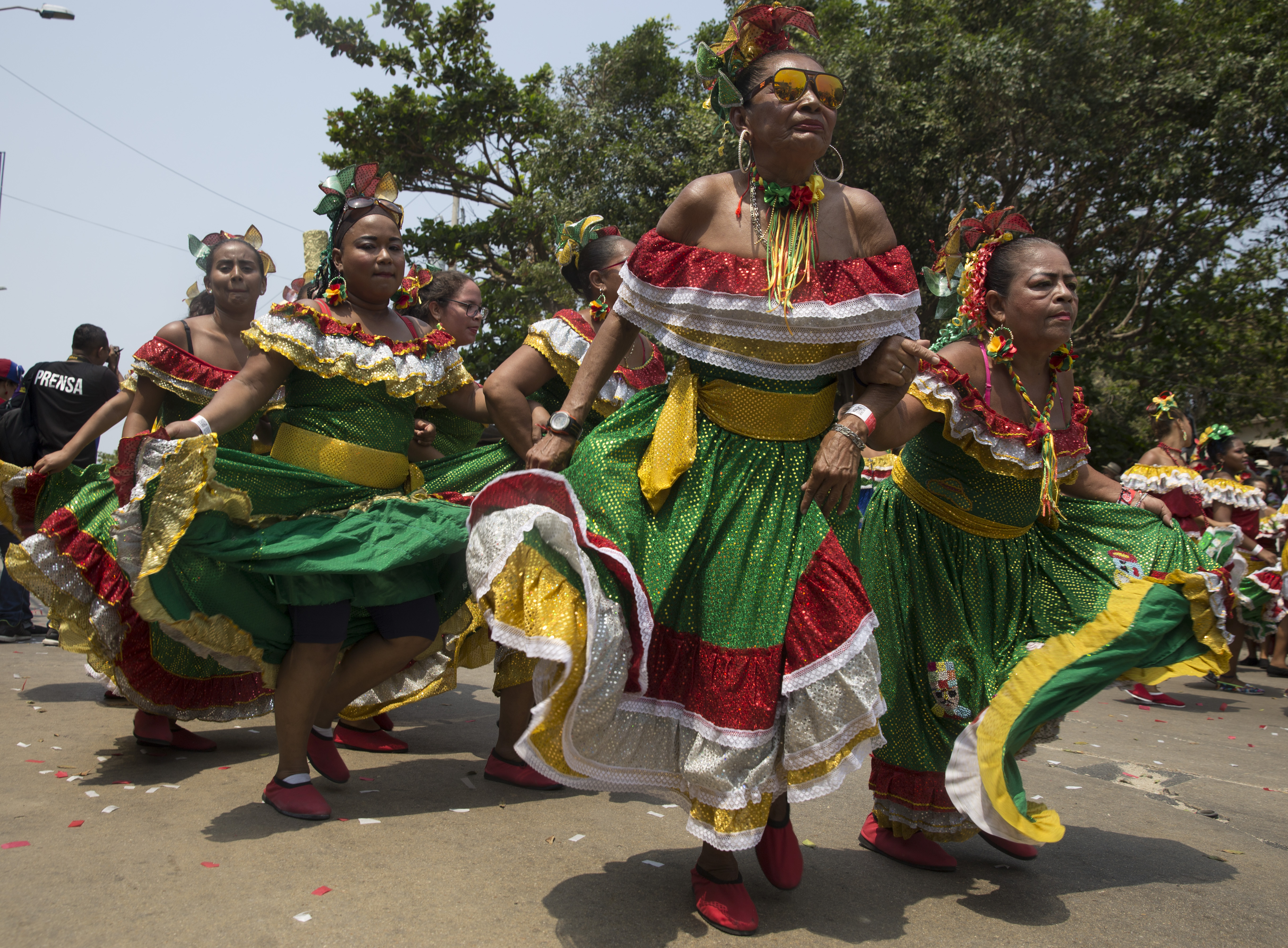
And in Colombia—a country whose indigenous and Afro-Colombian cultures face danger of extinction, stigmatization, and a wave of targeted threats and killings—the celebration has taken on a more profound meaning: Carnaval has become a means of preservation and celebration in the midst of that violence.
“Many of the dances that we show are our ancestral dances,” says Ana Maria Osorio, an organizer of the annual celebration. “They're dances of thousands of years that we pass down generation-to-generation. In Barranquilla, we have found a space of preservation.”
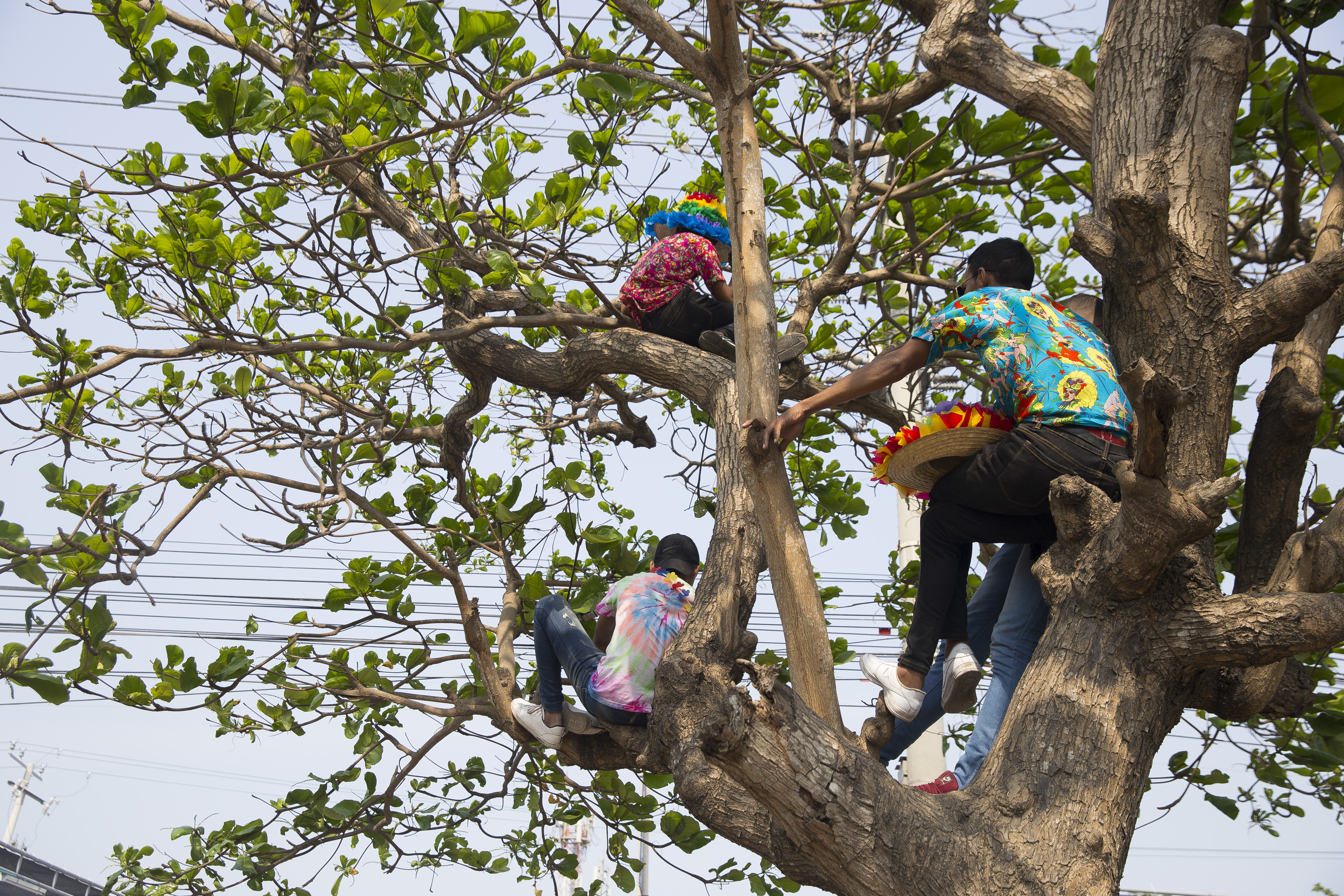
Colombia’s Carnaval was born with Barranquilla, then just a small coastal pueblo, where the Spanish began colonizing in the early 1500s. The conquistadors converged with African and indigenous populations, enslaving many and, later, clashing with them in their quests for liberty. As a result, the stories, traditions, music and dance of these cultures became irrevocably intertwined.
For years, Carnaval celebrations across the coast embraced that mesh of ethnicities, but in 1903, the first of what would become hundreds of parades showcasing ancestral dances and costume-based storytelling emerged in Barranquilla. It paved the way for the four-day explosion of music and dance that in 2003 was declared one of UNESCO’s Masterpieces of the Oral and Intangible Heritage of Humanity.
“It’s not exactly a feeling of love, because love is very different than this is, but it’s a sensation,” says Jerico Antionio, who has sold coastal food on the porch of his house during Carnaval for 40 years. “I’d call it ‘ecstasy’ to be in Carnaval.”
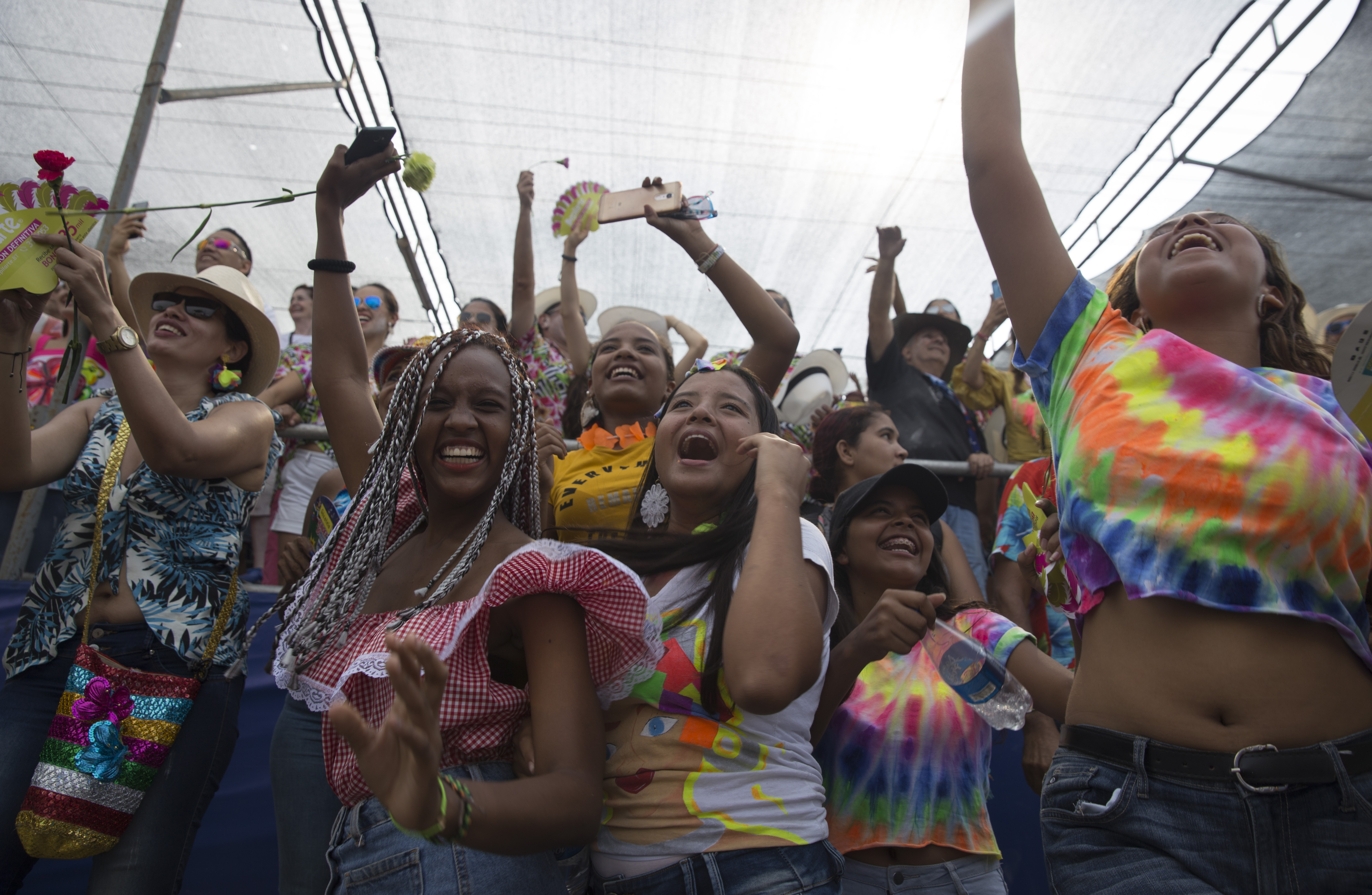
Today, thousands of costume-clad performers milling down a street running along the Magdalena River flaunt a blend of dances and stories smattered throughout Colombia’s history, while travelers from all over the world dress in bright colors or as the celebration’s main set of characters that dominate its parades.
La Reina de Carnaval and el Rey Momo, the celebration’s queen and king, hover over the parades on intricate floats. Marimondas, neon-masked characters created to ridicule high society, run along the route alongside groups performing the 13 Afro-Colombian, indigenous, and Spanish dances that make up the celebration.
Around 1.5 million people every year flock to the city to witness the 25,000 performers that make up Carnaval Barranquilla; to hear the melodies of accordions, African drums, and scratching of the Colombian guacharaca drift over throngs of street vendors spooning bowls of coastal rib soup and cooking greasy chuzos, grilled kabobs of chicken, pork and chorizo.
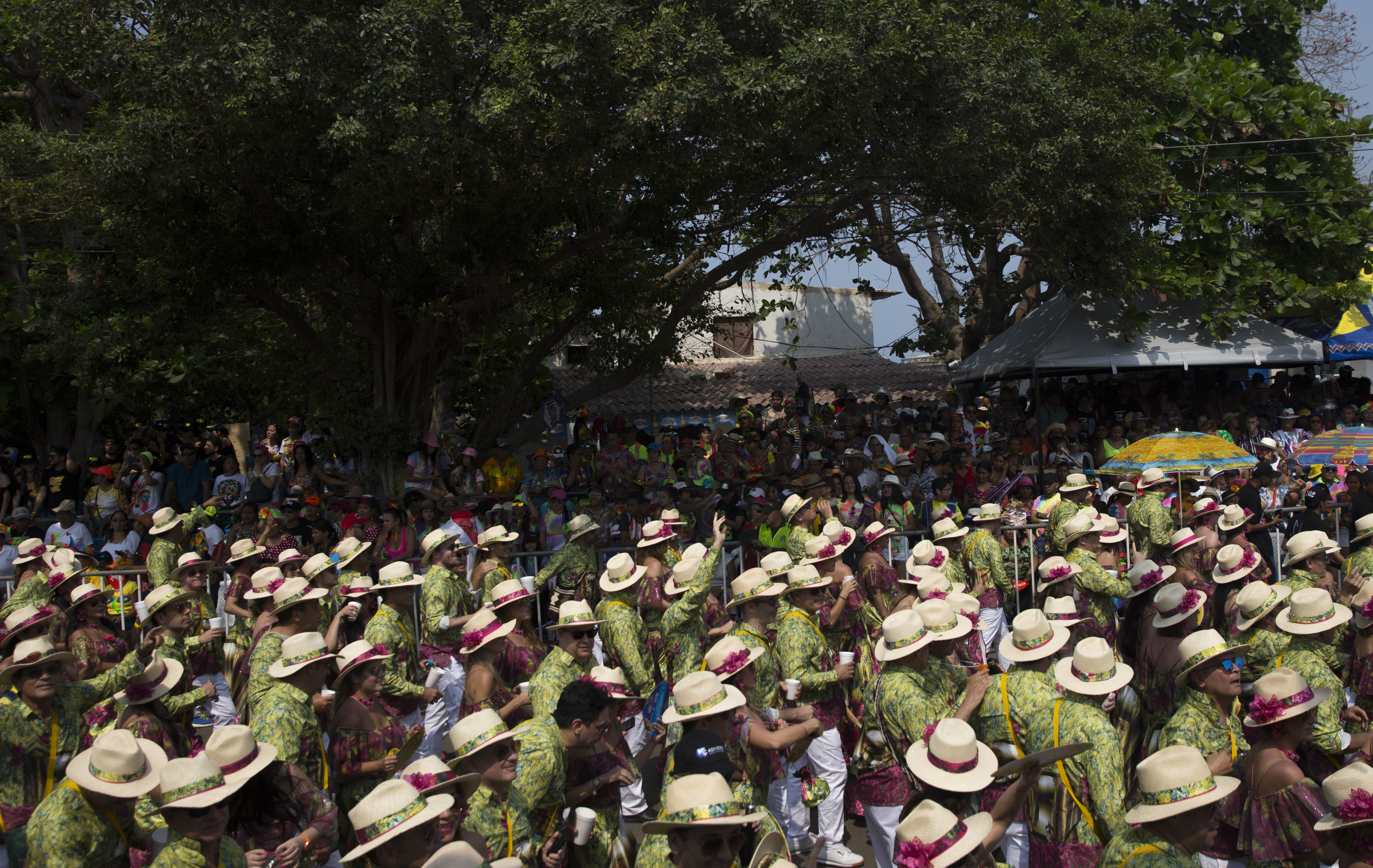
For many Barranquilleros, the festival represents the very heart of their city.
“Carnaval is ‘lo máximo,’ the greatest, for Barranquilleros,” explains Nesto Casado Acosto, a Colombian who stood among throngs of others touting flashy costumes, cervezas and Colombian street food. “For us, it’s everything. For us, it’s our pride. For us, it’s more important than New Years Eve or Christmas. All of it.”
For many others, though, the intricate costumes and celebrations that break out on the streets are a key part in preserving increasingly endangered cultures and showcasing black culture in Colombia, a country with one of the largest African diasporas in the world. The South American country touts 102 indigenous tribes, according to the Indigenous National Organization of Colombia, 60 percent of which are at risk of “physical and cultural extinction.” It’s a warning call that human rights groups and the country’s constitutional court have sounded in Colombia for more than 10 years.
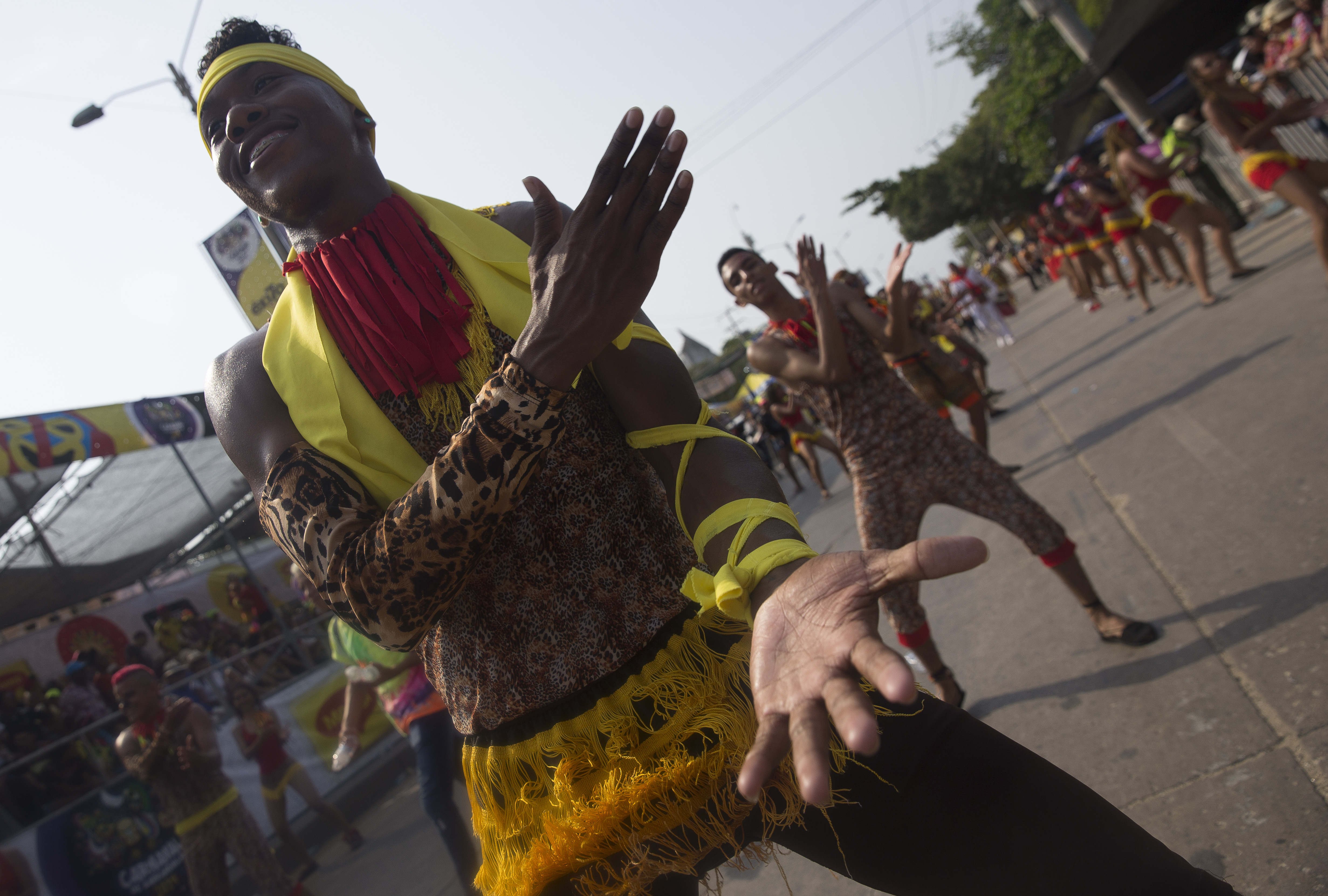
The root of the danger has been the 50-year armed conflict between the Colombian government, the Revolutionary Armed Forces of Colombia (or FARC), and other illegal armed groups in the country, which to this day has left mass-violence and mass-displacement in areas largely inhabited by indigenous and Afro-Colombian populations. The violence and targeting of those groups has, in turn, brought with it stigmatization of those populations as others in the country often incorrectly connect victims to illegal armed groups. And the country’s past and current political leadership has done very little to help, argues Gimena Sanchez, Andes director of the Washington Office on Latin America.
“There's definitely a hierarchy in terms of people in Colombia, sort of like a invisible caste system,” explains Sanchez, who has worked on Afro-Colombian and indigenous issues in Colombia for 20 years. “Where most of the urban-middle class and upper-class educated Colombians don't see Afro descendants and indigenous people on the same level.”
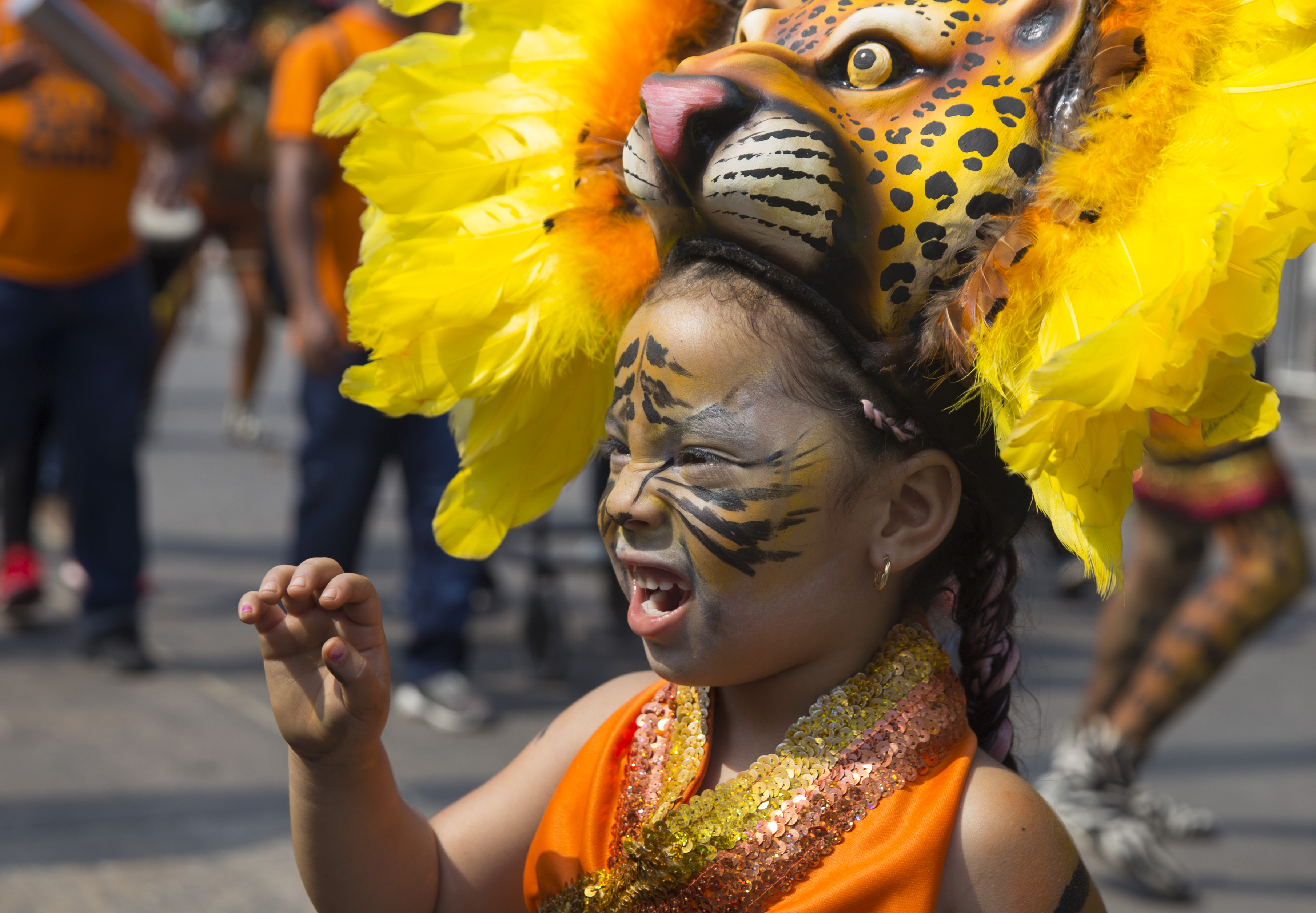
It’s through the storytelling and dance of Carnaval that Osocio says they hope to erase such stigmas and showcase the strong influences black and indigenous cultures have had in the construction of the country’s national identity.
“We're the products of this mix of cultures,” Osocio says. “We have indigenous influence, Spanish influence, African influence—Caribe Colombiano. In Barranquilla, we're very proud of this diversity, the diversity of our heritage.”
But Afro-Colombian rights organizations like Afro-Colombian Corporation of Social and Cultural Development (CARABANTU) say that through those costumes, Barranquilla Carnaval may be do more damage to stigmatized populations than good. They argue that some of the festival’s long-held traditions perpetuate the very stigmatizations facing the communities they seek to elevate.
The Carnaval is known for its extreme and often dramatized costumes which retell the stories of the coast in the most exaggerated fashions. One of traditional dances, “El Son de Negro,” tells the story of Colombia’s first slave settlements who would use exaggerated movements and facial expressions to mock the Spanish and, later, would rise up in revolt against them.
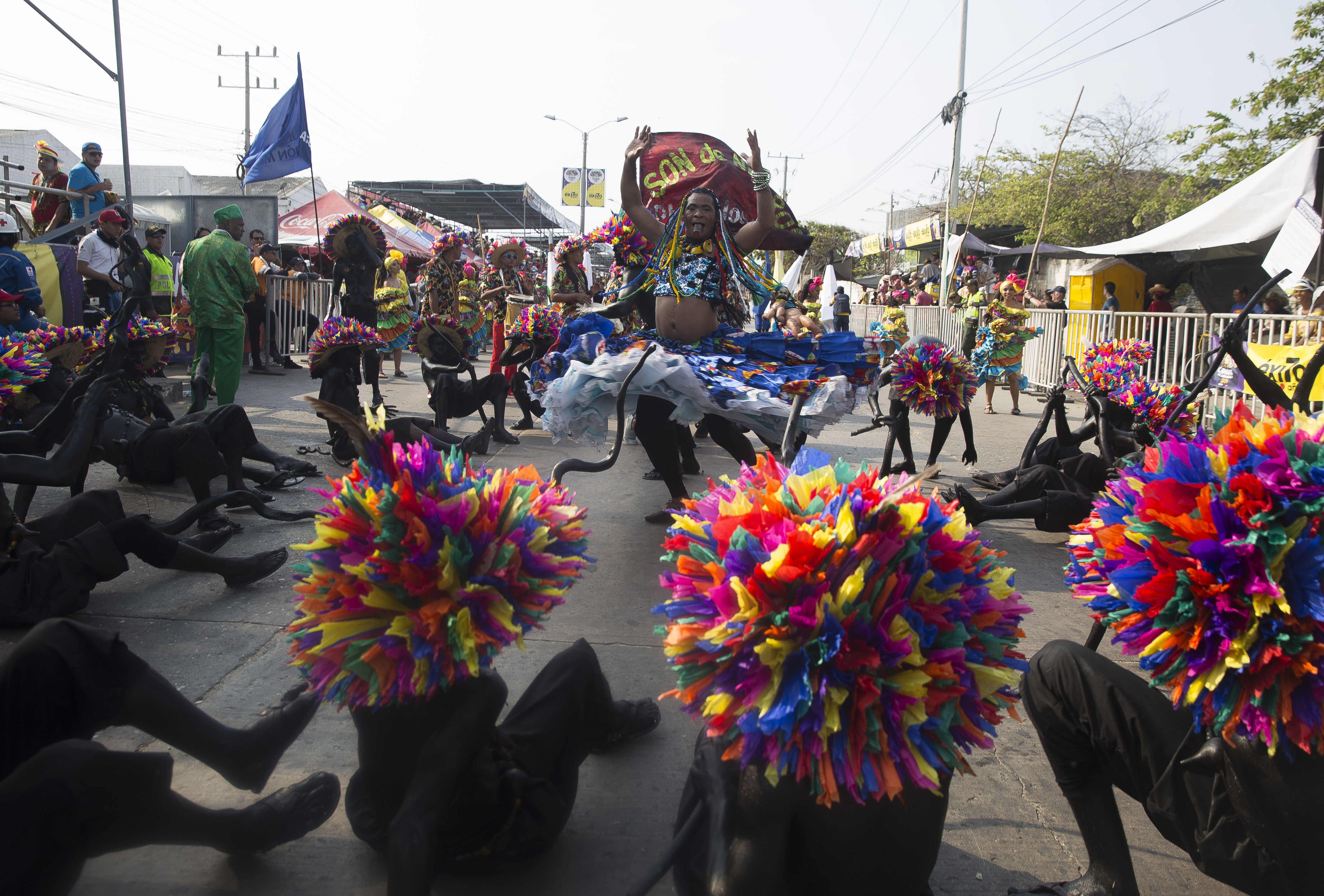
For the dance, boys paint their bodies black, and dress as slave warriors with machetes and colored hats, often jeering at surrounding audience members.
It is something that Ramon Perea, director of CARABANTU, described as “making comedy out of black people.”
“This is a lasting form of recognizing racism,” Perea argued. “We must denounce it because, really, it is a type of discrimination that affects a lot of people.”
Other Afro-Colombians at the celebrations approached the costumes with different mindsets. Some said they were a sign that Colombia was stuck in its own traditions but were unsure if the performance should be changed, while others were quick to say the paint was distinctively different than “blackface” in the United States, where it was was employed for centuries to scapegoat and negatively stereotype African Americans, particularly as costumes in minstrel shows that ridiculed black communities. According to Barranquillera Elizabeth Bauquez, in her city, conversely, it’s being wielded in a way that celebrates the story of their culture despite the stigmatization of Afro-Colombians in other parts of the country.
“No, it’s not offensive. It’s just a image of the black race in this story,” Bauquez argues. “For us, it’s just the opposite, it’s a representation of our black culture.”
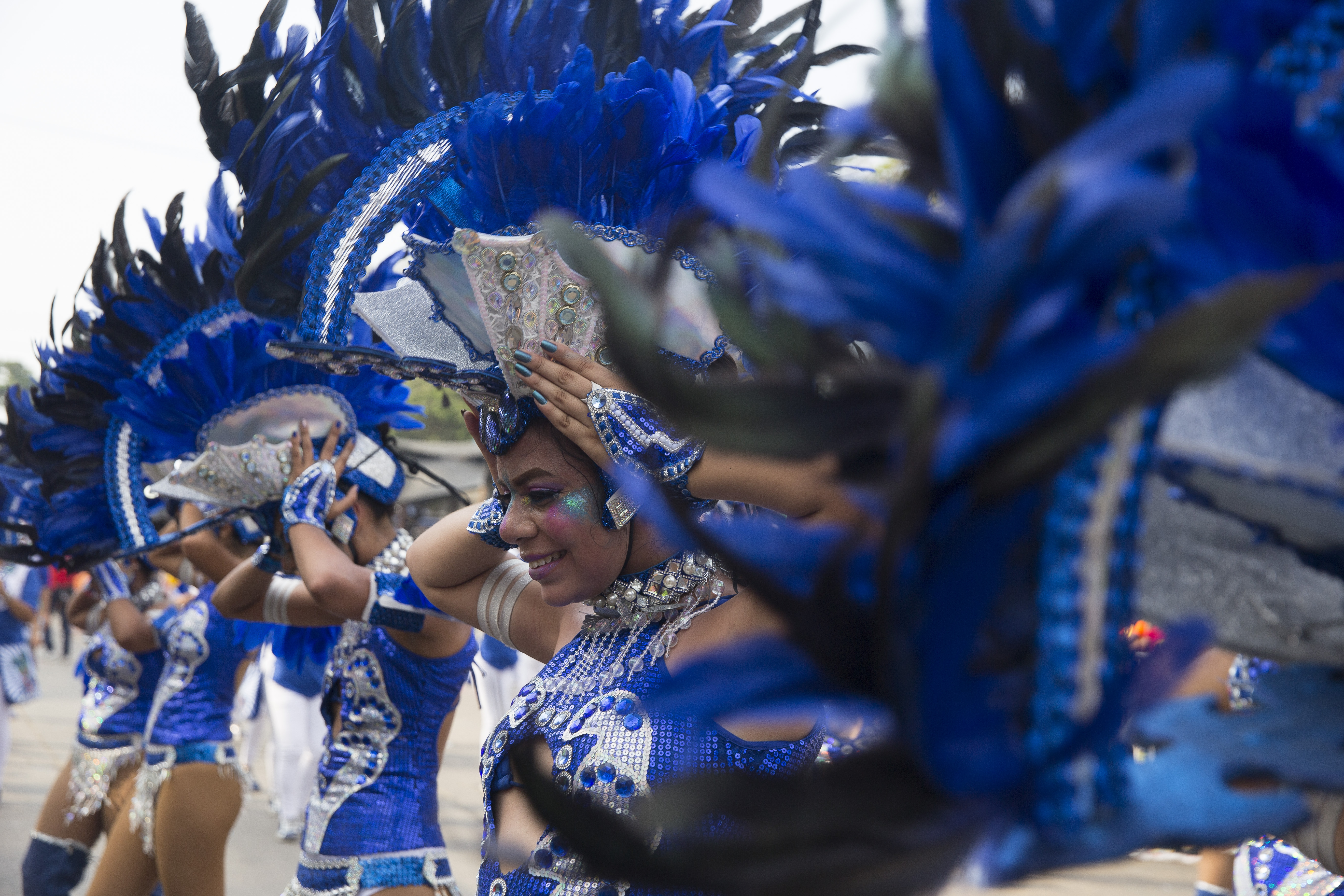
For Bauquez and her family, it was just one of the hundreds of costumes that made up the Carnaval, and one she and her family wore on t-shirts in the heart of the “Batalla de Flores,” or “Battle of Flowers,” parade as feathers-clad dancers spun around them in a mix of coastal music.
“I think it’s a really beautiful tradition,” she says. “Especially for our kids who right now don’t really know our culture. It’s an opportunity to know all of our culture, of all of the races, of the indigenous, the blacks, the slaves, all of them.”
But Perea argues that Carnaval, Colombia’s biggest festival, not only has the ability to represent Afro-Colombians through things they already do, like food and dance. It's also platform through which to shift the dialogue.
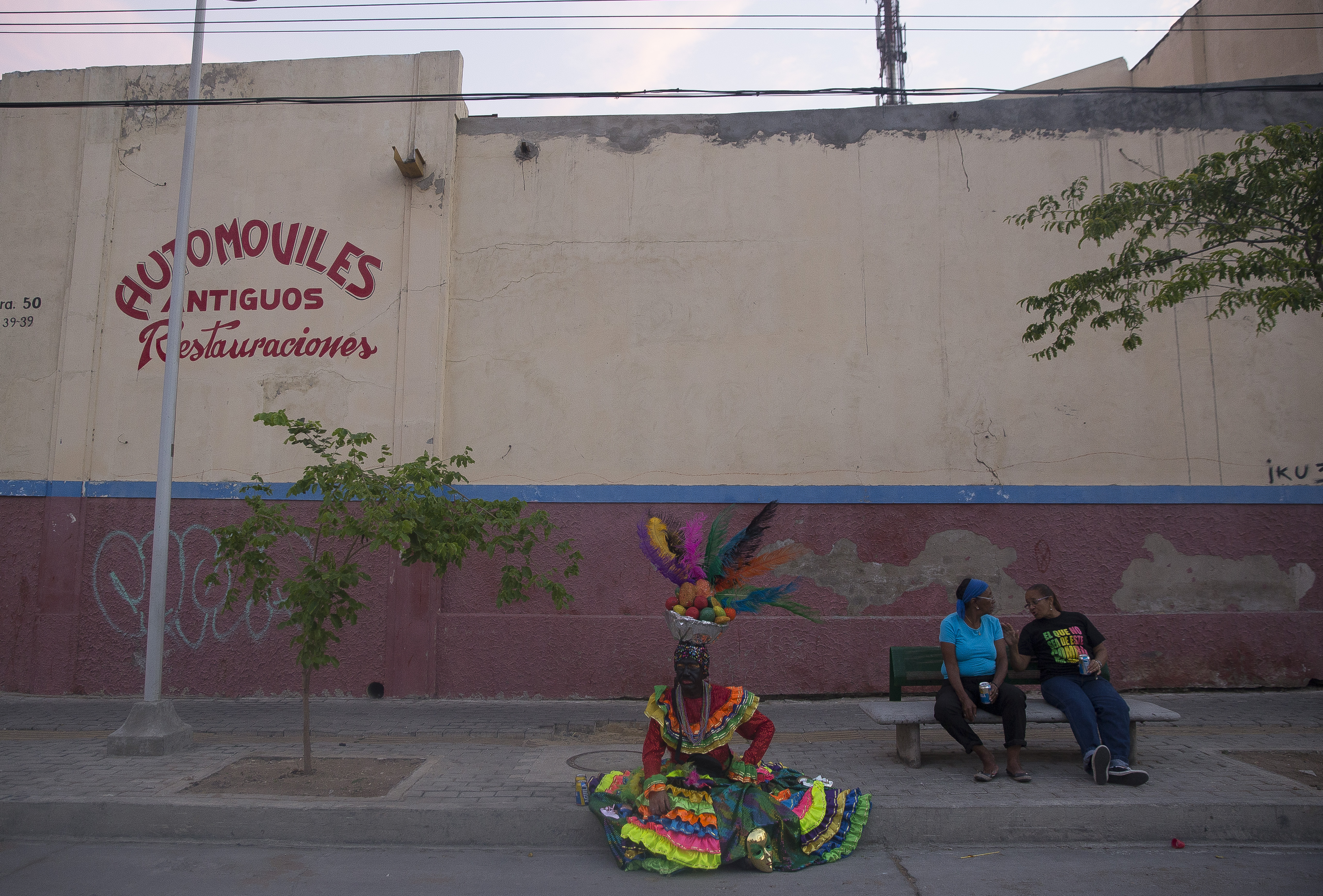
“This is an event of the entire country, they [Carnaval organizers] are positioned to [make a change],” he says. “What we need to do is to have take a critical look at how they can depict the black community. This is an event that can contribute to showing an alternative to racism.”
Sign up for our newsletter to get the best of VICE delivered to your inbox daily.
Follow Megan Janetsky on Twitter.
from VICE https://ift.tt/2UsQXbW
via cheap web hosting
No comments:
Post a Comment